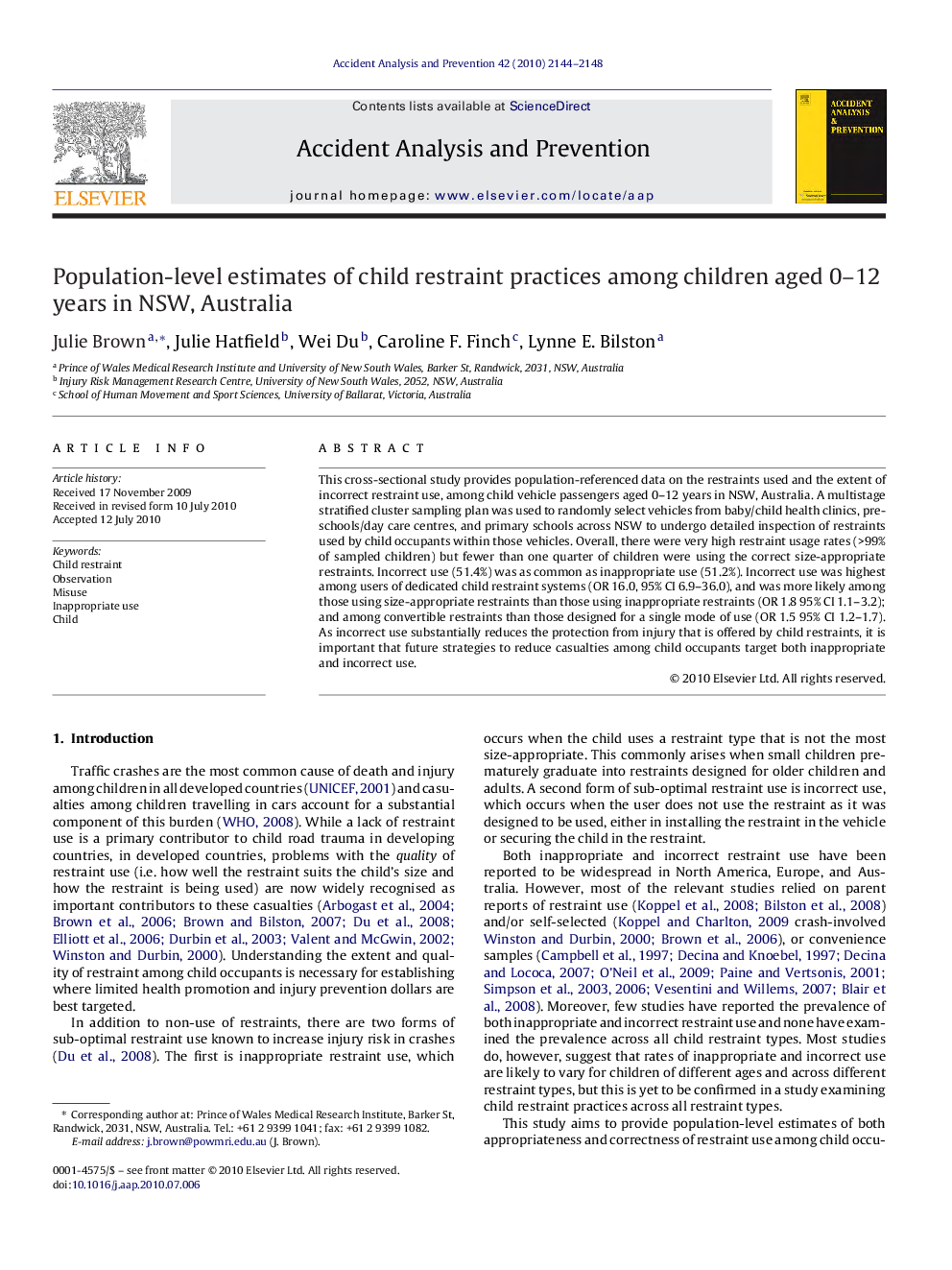| Article ID | Journal | Published Year | Pages | File Type |
|---|---|---|---|---|
| 573200 | Accident Analysis & Prevention | 2010 | 5 Pages |
This cross-sectional study provides population-referenced data on the restraints used and the extent of incorrect restraint use, among child vehicle passengers aged 0–12 years in NSW, Australia. A multistage stratified cluster sampling plan was used to randomly select vehicles from baby/child health clinics, pre-schools/day care centres, and primary schools across NSW to undergo detailed inspection of restraints used by child occupants within those vehicles. Overall, there were very high restraint usage rates (>99% of sampled children) but fewer than one quarter of children were using the correct size-appropriate restraints. Incorrect use (51.4%) was as common as inappropriate use (51.2%). Incorrect use was highest among users of dedicated child restraint systems (OR 16.0, 95% CI 6.9–36.0), and was more likely among those using size-appropriate restraints than those using inappropriate restraints (OR 1.8 95% CI 1.1–3.2); and among convertible restraints than those designed for a single mode of use (OR 1.5 95% CI 1.2–1.7). As incorrect use substantially reduces the protection from injury that is offered by child restraints, it is important that future strategies to reduce casualties among child occupants target both inappropriate and incorrect use.
